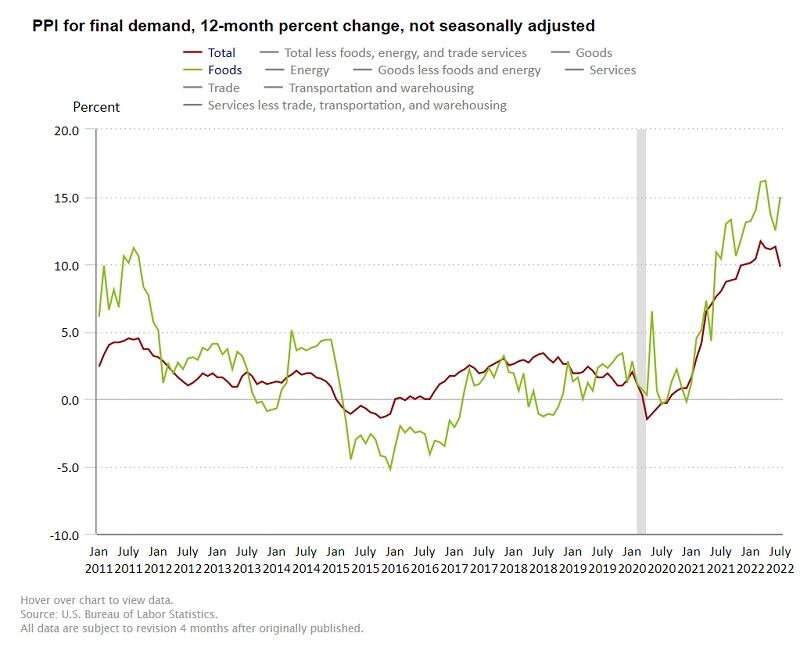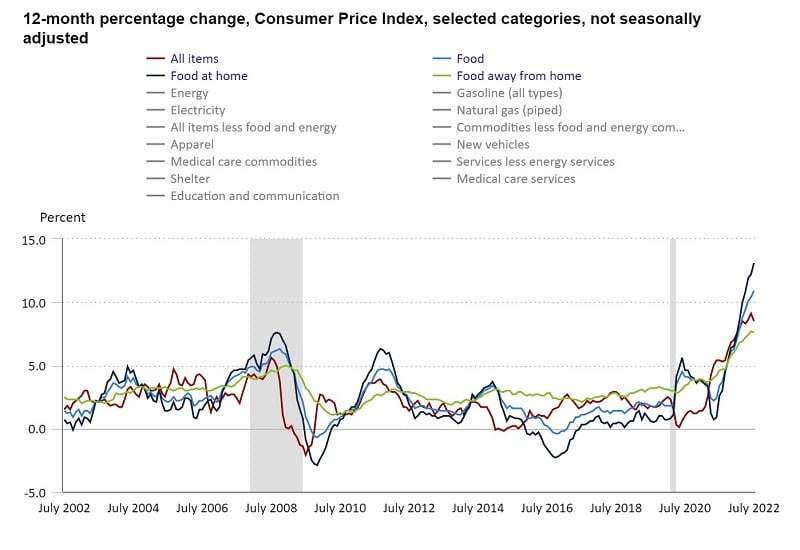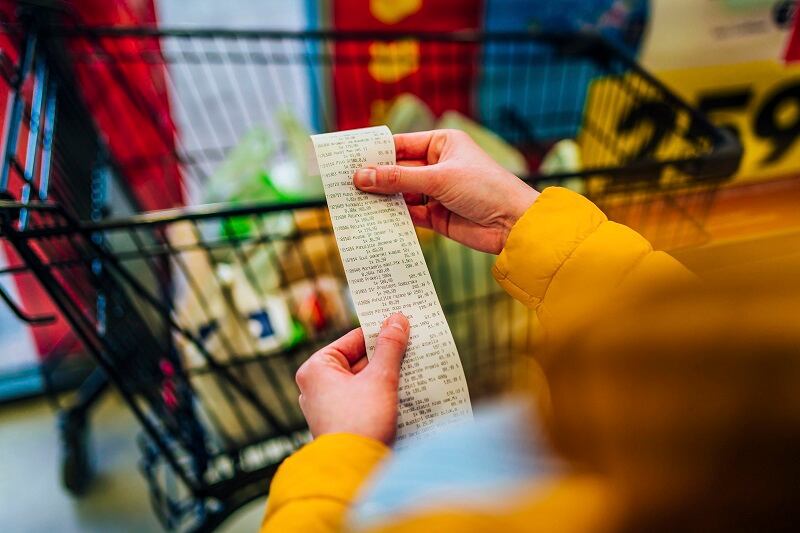The Producer Price Index, which measures the cost of goods paid by manufacturers, dipped 0.5% in July from June, reversing a steady monthly increase for more than two years including a sharp increase of 1% in June and 0.8% in May, the Bureau of Labor Statistics revealed yesterday.
The reversal did little to soften the 9.8% increase in the overall PPI for the full year, although this was also lower than the 11.3% year-over-year increase reported in June or the 11.7% gain in March.
The easing in the overall PPI was not mirrored in the food index, which is up a staggering 15% in July from the previous year (not seasonally adjusted), and 1% month-over-month when seasonally adjusted, according to BLS.
As with the dip in the Consumer Price Index announced earlier in the week, the drop in the PPI is mainly attributable to a 9% drop in prices for final demand energy, which helped offset a 1% increase in the final demand for food. Within food, key commodity prices that continue to climb year-over-year include eggs for fresh use, which is up 171.% in July from the previous year, fresh and dry vegetables which are up 61.5%, processed turkeys up 42.8% and processed fruits and vegetables up 21.3%.
Other common commodity ingredients that rose sharply for the full year include a wheat, which is up 22.3%, and raw milk, which climbed 50.3%, according to BLS.
Other key components that influence CPG prices also are up, including some packaging materials, as well as transportation and warehousing services.
Now is not the time to relax
While the overall dip is positive, “we are still far worse than pre-pandemic norms or even last year,” said Katie Denis, vice president of communications and research at the Consumer Brand Association.
She added that industry and regulators should not let the decline lull them into a false sense of ease, but rather should continue to reinforce the supply chain so that it can absorb financial and other “looming threats that can quickly upset progress.”
For example, legislators still have time to advance supply chain legislation that could help ease financial pressure from rising costs and limit supply chain disruptions, argues CBA’s vice president of supply chain and logistics, Tom Madrecki in a blog post published yesterday.
He explained that legislation permanently adjusting truck weight limits could ease transportation costs and logistics by reducing the number of trucks needed to transport the same amount of product.
“Truck weight limits aren’t the only problem undermining shipping efficiency,” he added. “Right now, trucks drive nearly 35% of their total mileage without transporting freight, resulting in ‘empty miles.’ We must advance policies that support stimulation testing to optimize trucking routes and build the workstream required to release capacity back into the system.”
Denis reinforced Madrecki’s call to action noting that rising inflation and worry about the supply chain are top concerns for consumers, according to a Consumer Brands/Ipsos poll of more than 1,000 American adults released yesterday.
It found 51% of respondents are ‘very concerned’ about inflation and only 13% are not really or not at all concerned about it.
“The last two years have taught consumers that supply chain disruptions mean added costs and, at times, shortages – and the poll numbers confirm they are well aware of the impact unexpected disruptions that have nothing to do with COVID can have,” Denis said.
As such, she reiterated: “It is imperative to pursue policies that better enable us to absorb shocks to the system.”




